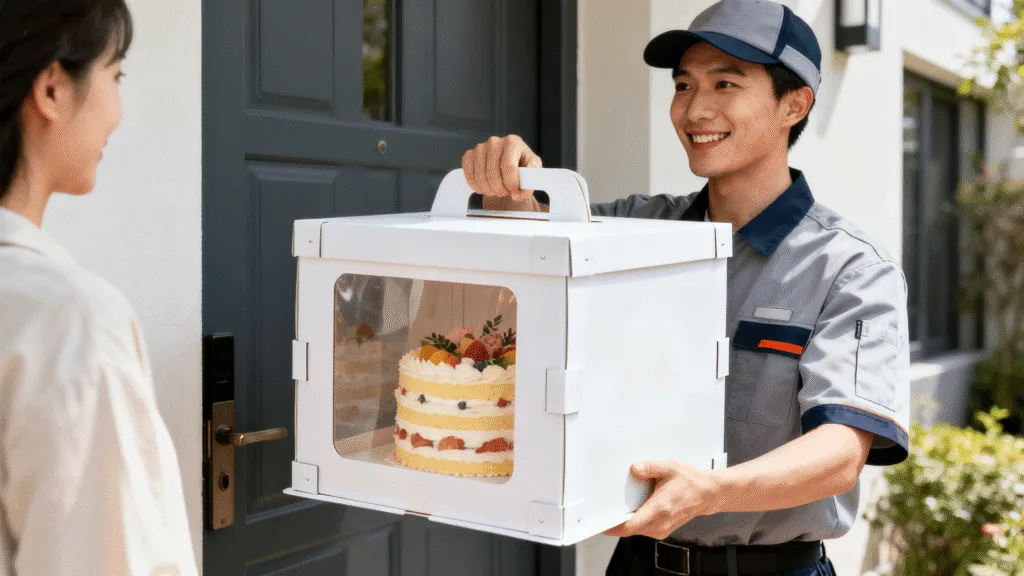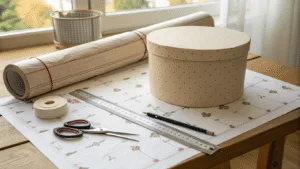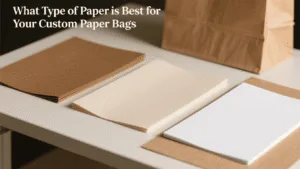Your beautiful cakes keep arriving damaged, leading to customer complaints and costly refunds. You’ve invested so much in your craft, only to have it ruined in the final step of the journey.
The solution lies in engineered packaging. By focusing on structural integrity, custom-fit inserts, and secure handling features, you can create a cake box that actively protects your product during the chaotic last-mile delivery process.
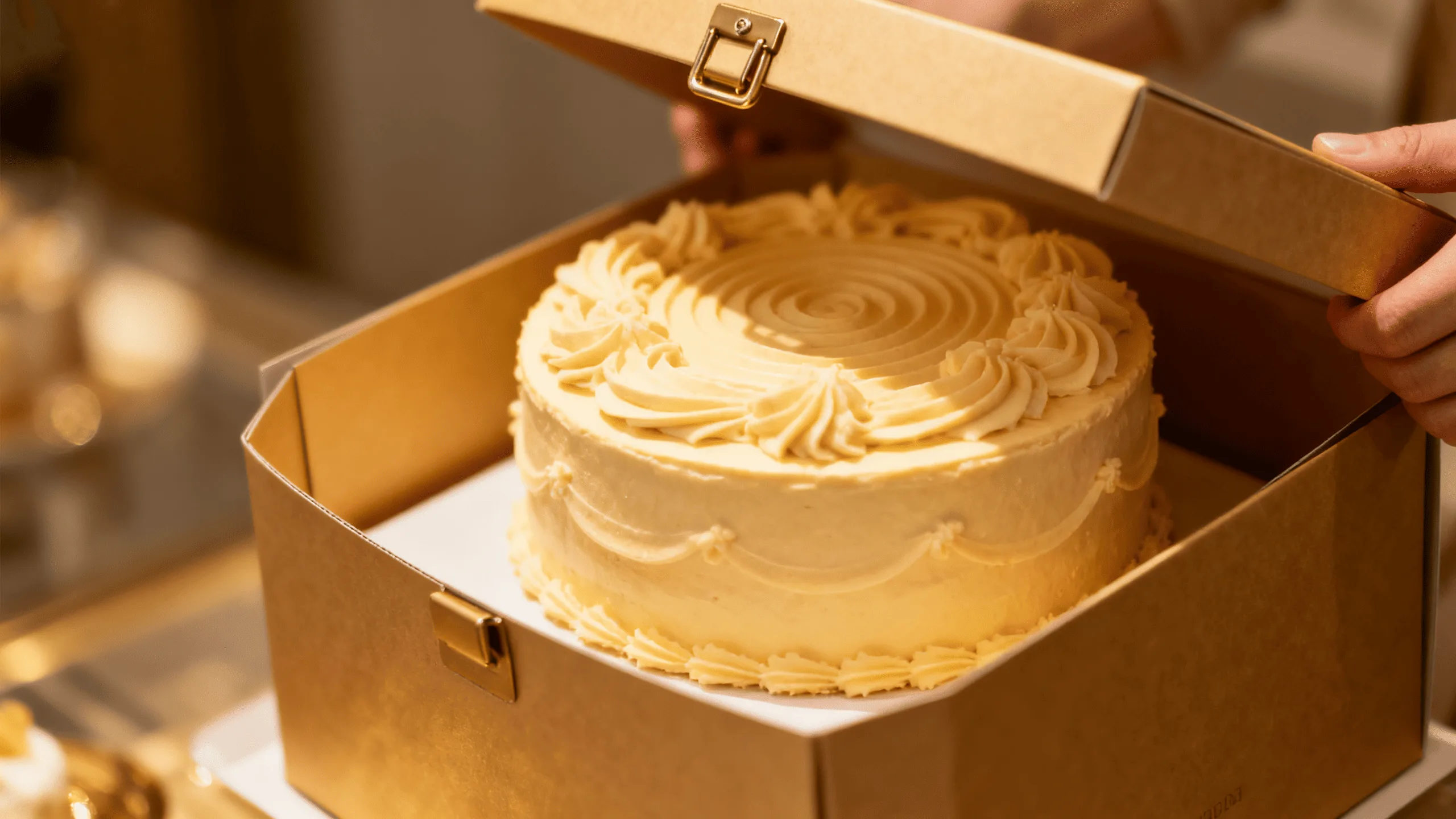
The panic in a baker’s voice is something you never forget. I once got a call from a new client who specialized in elaborate wedding cakes. Her first big e-commerce order, a multi-tiered anniversary cake, had arrived at its destination looking like it had been in a tumble dryer. The box had crushed, the layers had shifted, and the icing was a complete disaster. She was convinced her online business was over before it began. We didn’t change her courier; we changed her box. We moved from a standard paperboard box to a reinforced corrugated model with a custom insert that locked the cake base in place. It was a simple change, but it transformed her business. That moment taught me that for delicate products, the box isn’t just a container; it’s a piece of essential delivery equipment.
Isn’t a Stronger Box All You Really Need for Protection?
You assume that just picking a thicker, heavier cardboard will solve all your cake damage problems. But when your cakes still arrive with crushed corners and sagging tops, you realize strength is more complex than just thickness.
True protection comes from structural engineering, not just material thickness. The right grade of paperboard, corrugated construction for shipping, and intelligent design features like reinforced corners are what create a truly crush-proof cake box.
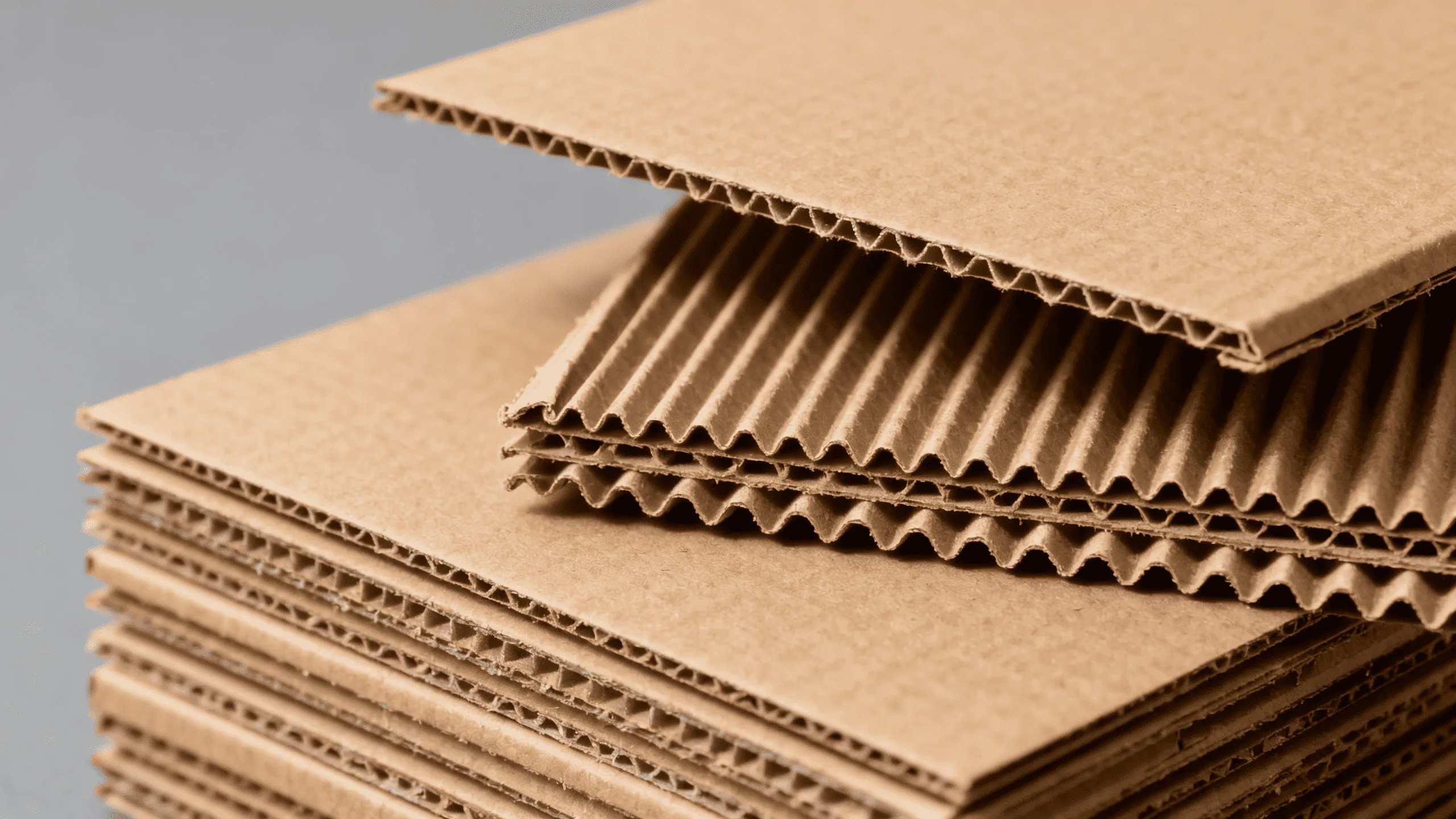
When we talk about strength in packaging, we’re really talking about resistance to forces like compression (stacking weight), vibration (from the delivery van), and shock (accidental drops). A simple, thick paperboard might feel strong in your hands, but it lacks the structural design to handle these dynamic forces. The real hero of last-mile delivery is corrugated board. That wavy layer of paper, called fluting, sandwiched between two flat linerboards creates a remarkably strong yet lightweight structure. It acts like an arch, distributing weight and absorbing impacts. For instance, the global last-mile delivery market is expected to grow by over 15% annually Source: Mordor Intelligence, meaning more packages are being handled more quickly than ever before. This high-speed environment is unforgiving to weak packaging. I always advise clients shipping cakes to consider corrugated boxes, even for smaller items. It’s the difference between a box that just holds a cake and a box that actively defends it.
Material Strength and Grade
The strength of a box starts with the paper itself, measured in grams per square meter (GSM). A higher GSM1 means a denser, stronger paper. But the construction matters more.
Smart Structural Design
Beyond the material, the box’s physical design creates strength. Features like an auto-lock bottom2 create a more secure base than a simple tuck-in flap, preventing the bottom from giving way under the cake’s weight.
| Material Type | Best Use Case | Key Strength Feature |
|---|---|---|
| SBS Paperboard | In-store pickup, very light cakes | Smooth, premium printing surface. |
| Kraft Paperboard | Heavier single-layer cakes, local delivery | High tear resistance and natural look. |
| Single-Wall Corrugated | Most shipped cakes, tiered cakes | Excellent crush resistance and cushioning. |
| Double-Wall Corrugated | Very heavy or large tiered cakes | Maximum protection for high-value items. |
How Do Custom Inserts Stop Cakes from Sliding and Smearing?
You’ve built a strong outer box, but your cakes are still arriving with smeared icing and broken decorations. The cake is moving around inside the box during transit, ruining the perfect finish you worked so hard on.
Custom-fit inserts are the key to immobilizing your product. By creating a snug cradle for the cake base or a secure holder for cupcakes, these internal components prevent any internal movement, ensuring the cake arrives looking exactly as it did when it left your kitchen.
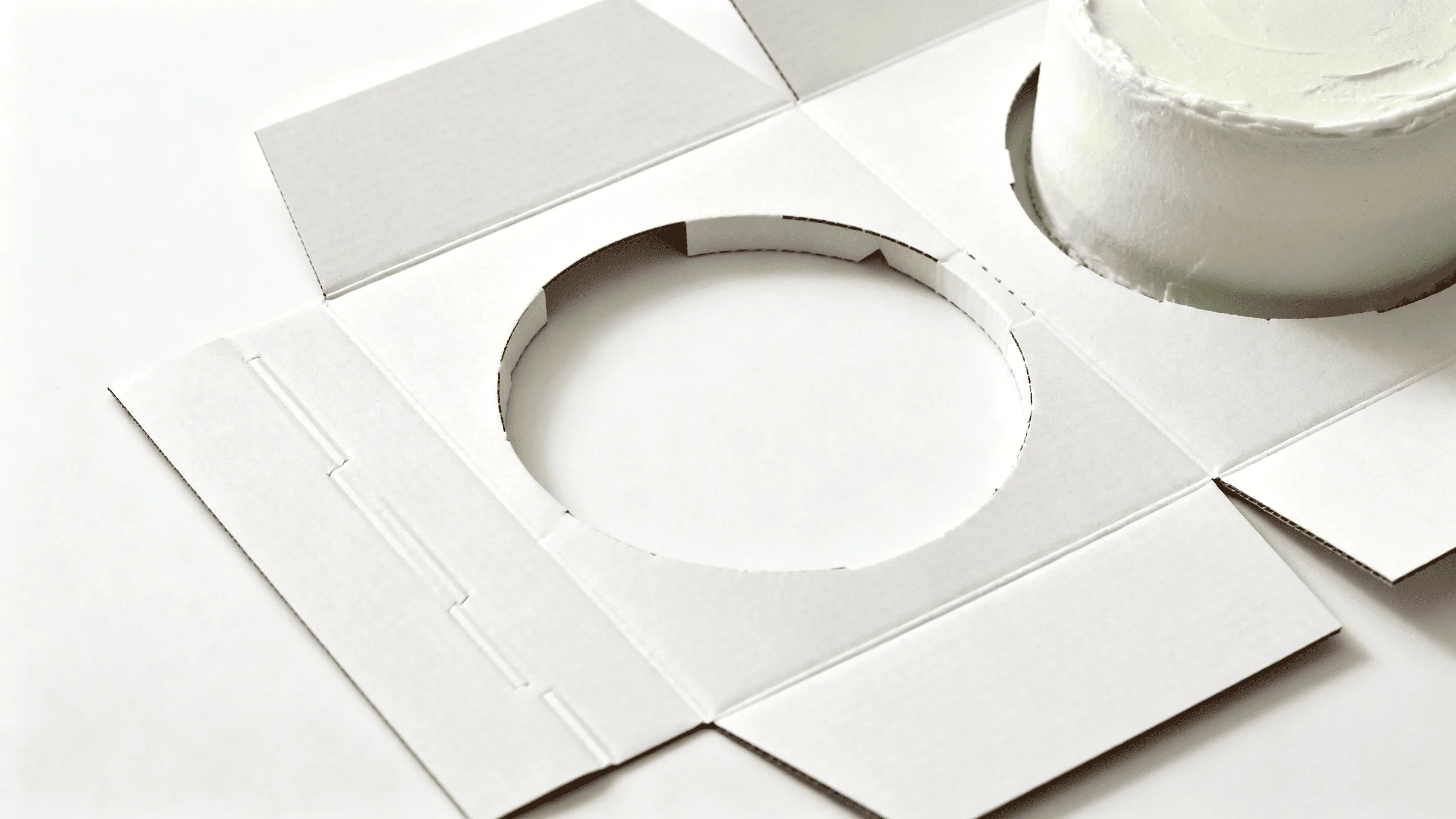
A box without an insert is just an empty room. For a delicate product like a cake, that’s a recipe for disaster. Every bump in the road, every sharp turn, every time the package is tilted, the cake slides. We once worked with a cupcake company that was getting a 20% damage rate on its shipped dozens. The cupcakes would topple over, smearing frosting everywhere. The solution was a simple, single piece of die-cut corrugated board. We designed it with twelve precise circular cutouts that the cupcakes nestled into perfectly. The insert slid into their existing shipping box, and their damage rate dropped to less than 1% overnight. That’s the power of an insert. It’s not just a piece of cardboard; it’s a custom-engineered suspension system. It holds the product in the very center of the box, away from the walls, providing a crucial buffer zone that absorbs shock and prevents the dreaded side-smear.
The Perfect Fit
The most important aspect of an insert is precision. The cutout for the cake base should be exactly the right size—not too tight to damage the cake when inserting it, but not so loose that it allows for movement. This requires precise measurements1 and expert die-cutting.
Presentation and Protection
Inserts also enhance the unboxing experience2. A cake presented on a raised platform insert looks more professional and premium. For cupcakes or macarons, a well-designed insert presents them neatly and makes them easy to remove without causing a mess. It’s a feature that serves both logistics and marketing.
What Makes a Cake Box Easy to Carry and Securely Closed?
The cake is protected inside a strong box with a perfect insert, but the delivery journey isn’t over. Lids can pop open during handling, or weak handles can tear, leading to a last-minute catastrophe right at the customer’s doorstep.
A secure locking mechanism and a reinforced, integrated handle are critical final touches. These features ensure the box remains a self-contained, protective unit from your door to the customer’s, preventing accidental openings and handling errors.
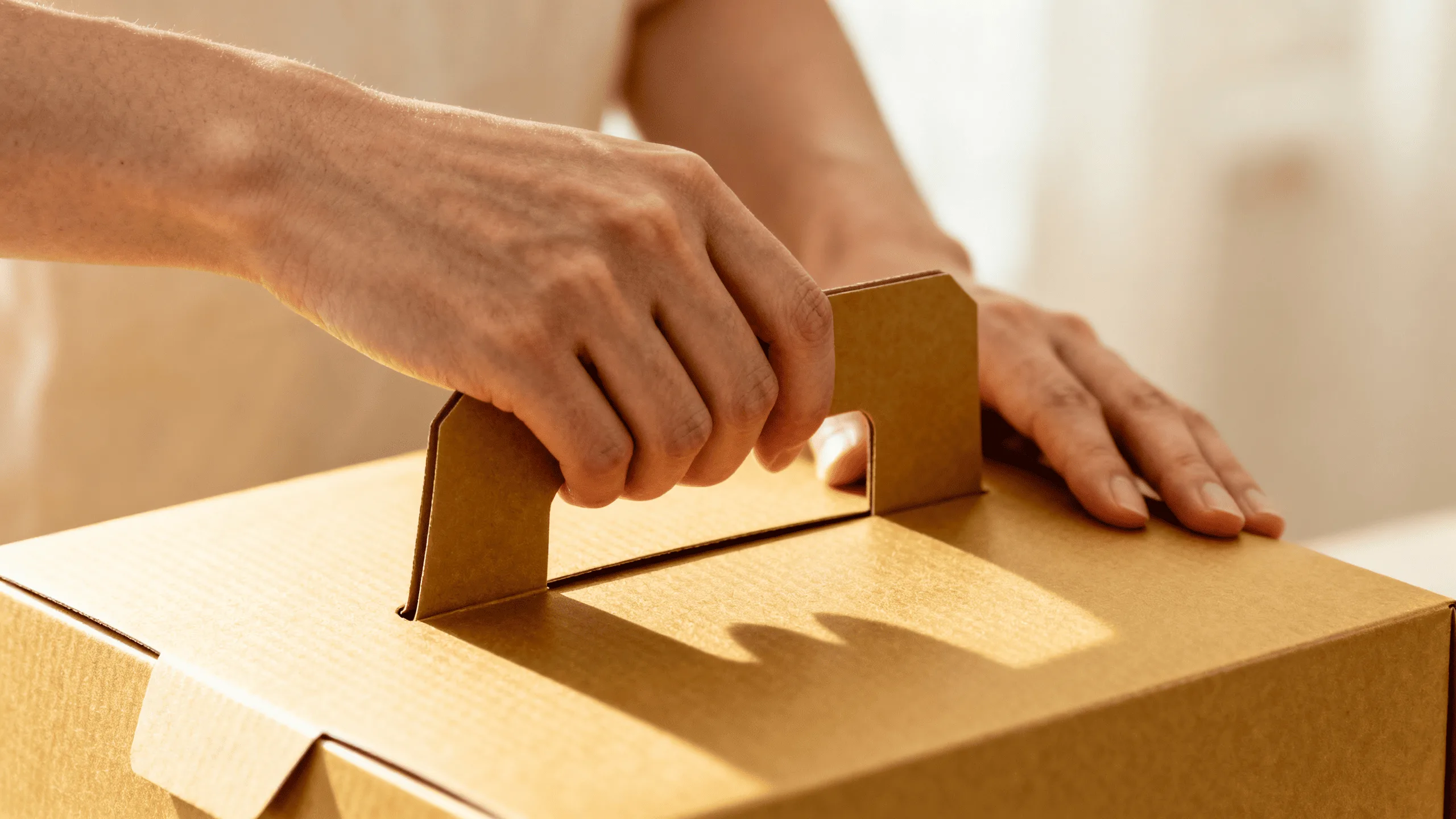
I often say that a cake box needs to be designed for the person carrying it just as much as for the cake inside it. Think about the delivery driver with an armful of packages, or the customer trying to get the cake from their car into their house. A flimsy handle or a lid that isn’t secure is an accident waiting to happen. One of our bakery clients who delivered locally was having issues with their standard pink bakery boxes. The simple tuck-in lids would often come loose. We redesigned their box with simple side-locking tabs. It was a tiny change to the die-line, adding almost nothing to the cost, but it made the box significantly more secure. We also added a wide, integrated handle made from the same corrugated board, which was far more comfortable and reliable than the thin plastic handles they had been using. These user-centric design features are part of a holistic approach to logistics. They reduce the risk of human error, which is a massive variable in last-mile delivery.
Locking Mechanisms
Simple tuck-in flaps are fine for in-store purchases, but for delivery, you need more. Options include:
- Locking Tabs1: Small tabs that insert into slits on the side of the box for a secure hold.
- Ribbon Closures: Elegant and secure, threaded through the box to tie it shut.
- Sleeve Designs: An outer sleeve slides over an inner tray, providing two layers of security.
Clear Communication2
Don’t forget the power of printing. Simple instructions like "Fragile: Cake Inside" and "This Side Up" with arrows can significantly influence how a package is handled by couriers and customers alike, providing a final layer of defense for your delicate product.
Conclusion
Effective cake box logistics isn’t about hope; it’s about engineering. By combining a strong, structurally sound outer box, precision-fit internal inserts, and secure, user-friendly handling features, you can conquer the challenges of last-mile delivery and ensure your creations arrive perfectly every single time.
Ready to design a cake box that protects your product and your reputation? Explore our custom shipping packaging solutions or contact our team for a consultation.
FAQ
What is the best material for shipping very heavy, tiered wedding cakes?
For heavy, high-value cakes, double-wall corrugated cardboard is the best choice. Its two layers of fluting provide exceptional compression strength and cushioning, creating a rigid box that can withstand stacking and rough handling.
Can cake boxes be insulated for temperature control?
Yes. For cakes with delicate frosting or fillings that need to stay cool, custom insulated liners can be added. These are often made from materials like reflective foil bubble wrap or foam, which can be cut to fit snugly inside your corrugated shipping box.
How can I make my delivery cake box look premium while still being strong?
You don’t have to sacrifice aesthetics for strength. You can print high-quality graphics directly onto a white corrugated board (oyster board). Finishes like embossing or using a custom-printed sleeve over a standard brown corrugated box can also create a premium unboxing experience.
What is a realistic minimum order quantity (MOQ) for fully custom cake boxes?
For custom-printed and die-cut corrugated boxes, MOQs typically start around 1,000 units. This is because the setup costs for printing plates and cutting tools are significant, and producing in volume distributes this cost to make the per-unit price affordable.

